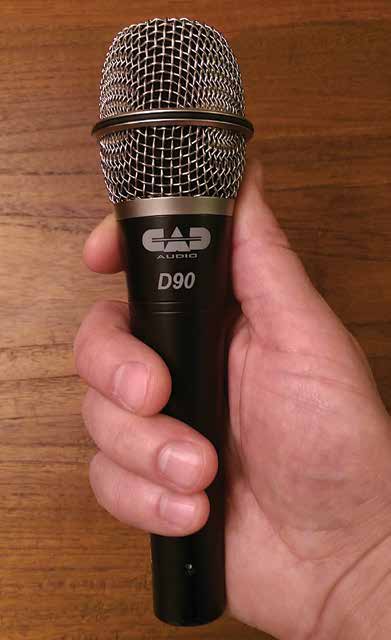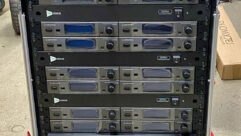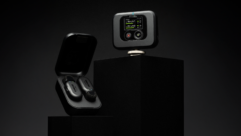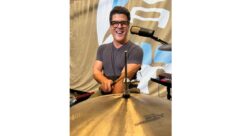

CAD Audio has become well known for its overachieving products, especially considering their various lines’ relatively low price points. First thriving in the project studio with its Equitek line and now, having ventured into broadcast production and sound reinforcement markets via the broadening of its Equitek and CADLive brands, respectively, CAD provides a broad range of transducer-based solutions to nearly all pro audio market segments.
The CADLive D90 is a straightforward supercardioid dynamic handheld well suited for a variety of applications in any live, studio or institutional environment where off-axis rejection, relatively smooth frequency response and rugged build quality are necessities. Even in the crowded handheld dynamic marketplace, the D90 has some notable characteristics that help it stand out from the pack.
Beyond the need for a generally flat frequency response to suit a wide range of sound sources, the D90 features a fairly pronounced top end boost when compared to an array of competing models from other manufacturers. This can be useful when a sound source (usually vocals) must “cut” through a thick mix; this is also particularly useful in many houses-of-worship and other generally acoustically absorbent environments. This same frequency signature sounds great on clean guitar/guitar cabinet, snare drum, etc., where a bit more “bite” is desirable.
The D90 can also handle a tremendous amount of SPL: up to 150 dB. As such, there’s really no placement in which it cannot serve sufficiently. That’s why buying a half-dozen of these affordable handhelds for a church’s worship band, for one example, makes a lot of sense. Notably, its off-axis rejection is enhanced by a really tight pattern—even a bit tighter than some competing supercardioid models I auditioned against it.
According to CAD, the D90’s comparatively “hot” signal output is due to its trademarked PowerGap Neodymium magnet. Regardless of the reason, the D90 is indeed louder than most of the handheld dynamics I tried alongside it. Combined with its frequency-forward top-end, I found that many vocalists preferred it to their normal (and even industry-standard) handheld dynamics. It was not the most feedback-resistant of the lot, though the overall sound quality of the D90 somehow made it a more attractive choice overall, as the most feedback resistant mics seemed a bit dull in comparison.
Finally, the D90 is truly rugged. It was dropped at least a dozen times (a few intentional on its screen and side) from a standing height onto a concrete floor with nary a scratch or dent and continued fine performance. Not all windscreens and bodies of such microphones are alike; as matter of fact, some dent and scratch, respectively, quite easily. The D90 does not.
Just as I have had great experiences with CAD’s extended microphone line, I would similarly recommend the D90 for a variety of reasons. Most importantly, it sounds great with its well-sculpted frequency response, and it is built to last.
Strother Bullins is Technology Editor for NewBay Media’s AV/Pro Audio Group. [email protected]










